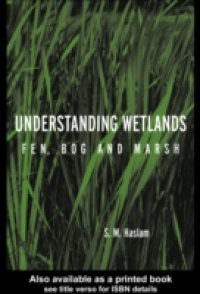Wetlands are an important, and sadly diminishing, habitat in many parts of the world. They contribute significantly to the planet's biodiversity, housing thousands of species of plants and animals. Increasingly, human management is required to sustain, and even create these fragile ecosystems, while global changes in climate are also taking their toll. Understanding Wetlands explains how wetlands are created naturally and how they sustain themselves. It describes how the flora and fauna of these unique habitats are ideally adapted to their environment, and how the ecosystem copes with pollutants and climatic change. The impact of human activity such as farming, building, and recreation is also assessed. The book concludes with a look at the need for conservation and various conservation techniques. This integrated and holistic account of wetlands is a valuable reference for students of ecology, biology, and environmental science. Its beautiful illustrations and accessible style also make it ideal for the general reader with an interest in the natural world.

